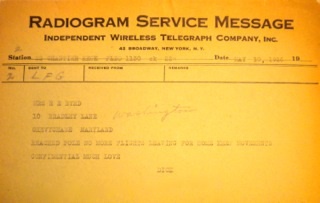A Thoroughly Modern Explorer: Richard Byrd and the flight to the North Pole
This research investigated the history of aerial polar exploration in the interwar period and focused on the American naval aviator Richard Byrd's 1926 North Pole flight, to explore how aircraft became part of the practice of exploration and how this change in practice shaped images of the technology, the place, and the practice itself.

In an effort to unpack the complexities of technologies' roles in the practice of polar exploration, this research drew upon insights from a variety of fields, including history of science and technology, history of exploration, cultural histories of heroism and masculinity, historical and cultural geography, and environmental history.
Bringing all these research approaches together to provide new insights into the role of technology in the history of exploration and, by focusing on the interwar period, it also extends the history of exploration into the 20th century, moving behond the so-called 'golden age' of exploration to examine how our images of both modern technologies and polar environments have continued to influence understandings of and engagements with Arctic regions throughout the 20th century and up until the present moment.
